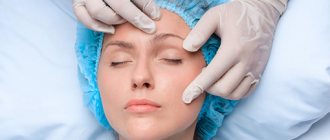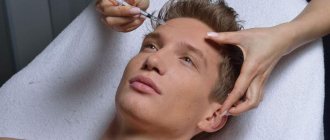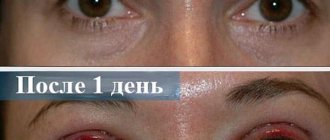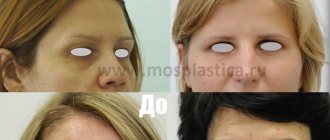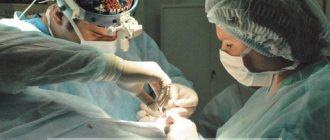For many patients, bone grafting is the only chance to perform dental implantation and complete restoration of the dentition. Constant clinical research in the field of osteoplasty and the use of high-tech equipment have made sinus lifting and other types of bone augmentation operations safe and less traumatic. However, some patients are seriously afraid of complications that may develop after the intervention.
!Important: Your treatment contract must indicate all acceptable postoperative conditions; carefully read them and the list of postoperative inconveniences. If you have any questions, please contact us immediately through Post-Operation Support at the number listed on the advice card.
Before performing a bone grafting procedure, the doctor plans a future operation and must inform the patient about the body’s natural reaction to the intervention, as well as possible complications after the operation. It should be noted that with a thorough preliminary diagnosis, a competently performed operation and compliance with the doctor’s recommendations during the rehabilitation period, the risk of complications is minimal.
At the initial consultation, immediately after the CT scan, the attending physician, having familiarized himself with the anatomical features, will warn you about possible individual inconveniences.
Many patients are interested in whether swelling occurs after surgery and how to cope with this unpleasant phenomenon. Yes, it does occur and is quite noticeable. Swelling after sinus lift and bone grafting can be due to both the body’s natural response to tissue damage and complications. To understand how to prevent or eliminate swelling, you need to understand the reasons for the appearance of this symptom after bone grafting.
Rehabilitation after plastic surgery: why do we need special recovery programs?
You can find out more about recovery after mammoplasty, liposculpture and other aesthetic interventions on our website, and in more detail - at an appointment with a plastic surgeon
.
Hematomas and swelling after surgery, unfortunately, are inevitable. The minimum period required for tissue restoration after blepharoplasty and facelift is 14-30 days.
Rehabilitation after body surgery usually lasts 2 times longer. Of course, much depends on the specifics of the surgical intervention and the individual characteristics of the body.
Each patient always has a choice: to undergo an additional rehabilitation course or not. However, it is important to understand that rehabilitation programs are not only aimed at reducing rehabilitation or reducing pain. Electrostatic and lymphatic drainage massage, ultraphonophoresis and injection procedures have a beneficial effect on the skin at the cellular level. The restoration course is an excellent solution for those who strive for the best aesthetic result, want to take care of their skin and begin rehabilitation after plastic surgery with self-care, which is necessary to consolidate the impressive effect!
Using cosmetics
After undergoing surgery or cosmetic procedures, it is unacceptable to use decorative cosmetics on the skin of the face for 7-14 days. And after this time it stands:
- choose natural formulations without flavors and chemical components;
- use professional skincare products;
- use creams with a tightening and regenerating effect;
- avoid applying greasy and dense products to the incision sites;
- limit the use of cosmetic compositions with obvious contraindications;
- Avoid using lotions and gels with increased alcohol concentrations.
The operating surgeon or cosmetologist will tell the patient which rehabilitation option to follow during the consultation.
Rehabilitation after facial plastic surgery
Rehabilitation after a facelift (facelift), liposculpture and blepharoplasty is individual, but as practice shows, tissue restoration takes 2-3 weeks
.
During this period, bruises
and slight
swelling
, which increases
2-3 days
after surgery. Pain usually does not bother you and does not interrupt you from rest and daily activities; it can be reduced with the help of mild painkillers prescribed by your plastic surgeon. There is no need to worry about scars after a facelift and blepharoplasty - they are hidden in the natural folds of the skin or under the hair, and over time they will become invisible. If, during recovery after facial plastic surgery, a patient has an individual tendency towards hypertrophic, keloid, atrophic scars or the tissue healing process does not go entirely smoothly, cryodestruction of the scar, lipofilling or injection cosmetology comes to the rescue. Plastic surgeons at the Pirogov Clinic are always in touch with their patients. The key to successful recovery after facial plastic surgery is to follow all the doctor’s recommendations: for a while you need to give up warm baths, solariums, alcohol and smoking.
Procedures after rhinoplasty
Rhinoplasty is a complex operation, although it is considered the first of all the variety of possibilities available to plastic surgeons. In addition to the classic recommendations for rehabilitation after the procedure, rhinoplasty implies the following restrictions during the recovery period:
- for the first 2 weeks after the manipulations, the patient is allowed to sleep only in a supine position; he cannot even turn on his side, much less on his stomach;
- You cannot wear glasses for 1 month - neither correcting visual acuity nor sunglasses;
- It is prohibited to use decorative or medicinal/care cosmetics for 2 weeks.
Microcurrents
For rehabilitation to take place without complications and in a short time, the doctor can prescribe the following procedures:
- . The procedure perfectly relieves pain and quickly solves the problem of swelling. Microcurrents “work” as an anti-inflammatory, immunomodulatory and detoxifying agent. They have a tonic effect on all muscle groups and improve regeneration processes in epidermal cells.
- Cosmechanics
. This procedure is especially effective for getting rid of bruises. According to patients and doctors, with normal rehabilitation, bruises disappear only after a week or more, which makes it impossible to lead a normal lifestyle. Cosmechanics reduces this period by half.
To learn about what Cosmechanics is and its effects, watch this video:
Facial lymphatic drainage
How to relieve swelling after blepharoplasty or facelift, and also get rid of bruises after surgery?
lymphatic drainage
will best cope with this task . This is a soft and painless procedure, the essence of which is manual or hardware impact on the skin in the direction of lymph flow.
A course of electrostatic and microcurrent drainage can be started 2-3 days after facial plastic surgery
- in accordance with the recommendations of the plastic surgeon.
Most often, to achieve the desired effect (quickly relieve swelling after blepharoplasty, get rid of bruises, tone the skin), 3 procedures
.
For those who strive for excellent results and want to take care of their skin, we recommend a course of 5 procedures
.
The effect of lymphatic drainage massage after blepharoplasty / facelift
- Tones the skin, improving blood and lymph circulation;
- Restores normal metabolism of nutrients in soft tissues;
- Improves the skin's ability to regenerate;
- Lifting the skin and muscle layer;
- Fights wrinkles;
- Models beautiful facial contours;
- Strengthens the effect of comprehensive facial rejuvenation;
- It has a general stimulating effect on blood vessels and epidermal cells and, as a result, quickly relieves swelling.
A course of restorative procedures after plastic surgery on the face reduces the recovery time by 2 times!
This means that after just 1 week, the visible consequences of surgery (swelling and bruising) will be barely noticeable or disappear completely, and your skin will look healthy and well-groomed.
Read more about the cost of a recovery course after plastic surgery
Options for complications
The problems patients face after a facelift vary. Some are detected soon after the end of the operation, even before discharge from the hospital. Others cause concern in the late rehabilitation phase.
Edema
Swelling after a facelift occurs even with the correct actions of a specialist and undisturbed rehabilitation process. The accumulation of fluid and an increase in its volume is a protective reaction to tissue damage. Normally, it reaches its maximum on the 3rd day after surgery. From this moment the swelling begins to subside. And by the 10th - 14th day, the excess fluid is mostly eliminated.
The day after facelift surgery
Naturally, swelling after a circular facelift will be more extensive if it is full and fleshy. Indeed, in this case, trauma will affect a larger number of tissues. Problems with the heart, blood vessels, and kidneys, even if they did not prevent the plastic surgery, can cause swelling to linger for a long time.
Hematomas
After facelift surgery, the patient may experience bleeding. This in itself is a complication, but it also leads to another problem - hematomas. The accumulation of blood in some areas of the face is manifested by increased pain, dark spots on the skin, and blood leaking through the stitches. An increase in tissue volume in the area of accumulation of biological fluid also becomes obvious. If a problem occurs, it is detected 4 to 6 hours after surgery.
A-on the 4th day after surgery; In a week
Minor bruises after a facelift are removed by a doctor through a suture or using suction. A more serious problem, where blood continues to leak, resulting in a tense hematoma, will require opening the wound, clearing it of blood clots, and sealing the vessel.
Seam problems
Inflammation and divergence of sutures with the addition of an infectious process of sutures.
Suturing is the final stage of the operation. Some of them are removed 5 days after the intervention, others even later. Primary healing should be accompanied by the formation of crusts on the surface, under which tissue epithelization occurs.
If the stitches become inflamed, that is, they become red, become wet, and hurt, this is already a complication. It can be caused by intolerance by the body to the material from which the thread is made. The same thing happens when the wound is not drained properly. Poor healing can be caused by a hematoma. Reduced immunity, vascular, endocrine disorders, chronic diseases make the initial tightening of sutures slower. It may be accompanied by the release of serous fluid. In such cases, specialists prescribe the intake of ascorbic acid, zinc, and amino acids in advance. They stimulate tissue regeneration.
Normally, the sutures after a circular facelift should no longer look inflamed on the 7th - 8th day, since primary healing occurs at this time. If this is not the case, you need to consult a doctor to determine the cause of poor tightening.
Necrosis
— a patient with tissue necrosis in the parotid area after a facelift;
B - 13 months after surgical treatment Ignoring problems with suture healing, as well as impaired blood supply to the skin area, can lead to necrosis. This dangerous complication occurs due to too much tissue detachment or too much tension. The latter leads to non-closure of the seam line. As a rule, the skin behind the ears is affected. This is an area where tension is especially active. But the problem can also appear in the area of the temples and in front of the ears.
In addition to medical errors, necrosis can be caused by atherosclerosis and diabetes that the patient has. An undetected hematoma can also lead to this consequence. Fortunately, necrosis after facial surgery is rare.
Wound suppuration
Infection of the wound after a facelift.
The leakage of purulent fluid from the postoperative wound and inflammation are also rarely detected. The reasons for this phenomenon are the presence of a hematoma, the development of necrosis, and the entry of hair and other foreign particles into it. To avoid suppuration of the wound, it is washed more than once during the operation, and at the end a drainage system is installed to drain excess fluid.
If a problem does arise, treatment depends on the cause. Sometimes taking antibiotics and appropriate external treatment is sufficient. In more dangerous cases, the suppuration is opened, the wound is cleaned, drained and stitches are applied again.
Scarring
Keloid scar
Problems with suture healing can lead to the formation of thick scars instead of barely noticeable ones. The same thing occurs for some due to a tendency to hypertrophy that exists by nature. The problem also appears due to tight skin tension.
Scars have to be treated additionally, for which there are several methods. It can be:
- special ointments that absorb excess tissue;
- hormone injections aimed at providing the same effect;
- surgery.
The photo shows an example of a well-performed surgical facelift
Facial oval deformation
A facelift is needed, among other things, to give clarity to the contours of the face. But with other positive moments after it, this goal may remain unattainable. The patient complains that his lumps do not disappear after a facelift. Such deformation occurs as a result of the formation of small hematomas by the subcutaneous fat layer or displacement of areas, uneven or excessive removal of fat in the chin area. The problem is corrected by repeated surgery.
Hair loss
Postoperative sutures for a circular lift are placed on the scalp. And this can cause the hair to thin out in the behind-the-ear and temporal areas. The culprits are thinning areas of the skin and damage to the hair follicles. For most, the problem is resolved without intervention after 3 to 4 months, when the follicles are restored. If this does not happen, you have to excise the scar that is interfering with hair growth or transplant skin from other areas.
Thinning hair can be stressful. Then the hair falls out over the entire surface of the head. This happens in people with initially weak bulbs. This point is considered even before the operation. To stop hair loss after it, you need to get rid of stress and strengthen your hair.
Rehabilitation after liposculpture
Body liposculpture allows you to instantly get rid of “fat traps”, recreate an athletic profile and compensate for the lack of soft tissue volume (enlarge your breasts, buttocks). Liposculpture includes liposuction and lipofilling and is a minimally invasive operation (without incisions), since the surgeon performs all manipulations with a special cannula through small punctures in the skin. Our clinic has installed the latest vibration liposuction device PAL Liposculptor
, which makes such a serious and complex operation as gentle as possible - it eliminates damage to blood vessels, extensive hematomas, and bumps on the skin.
However, rehabilitation after liposculpture of the body cannot be called simple, especially if the plastic surgeon worked on more than 2 zones. After the operation, it is important to wear compression garments
, temporarily give up sports training (later it is not only possible to return to it, but it is highly desirable - to consolidate the result) and follow other doctor’s recommendations.
Compression underwear
After some surgeries, such as mammoplasty, breast lift, breast reduction, abdominoplasty and liposuction, it is necessary to wear compression garments. This measure helps control the inevitable postoperative swelling, maintains a state of rest in the surgical area, relieves stress on postoperative scars, and also accelerates their maturation and prevents expansion.
Effect of lymphatic drainage after liposculpture
- Tones the skin and muscles, improving blood and lymph circulation;
- Restores normal metabolism of nutrients in soft tissues;
- Improves the skin's ability to regenerate;
- Fights cellulite;
- Models slender and toned figure contours;
- Relieves swelling and bruising;
- Promotes rapid healing of cannula marks;
- Helps consolidate and improve the results of body contouring surgery.
After body liposculpture, a course of 5-8 procedures or more is recommended so that you can evaluate the result and return to an active life as soon as possible.
Question answer
In dietary nutrition, the consumption of salt, sugar, fatty, spicy, smoked foods is unacceptable.
Indeed, the duration and complexity of rehabilitation may differ from person to person, even if identical operations were performed. This is influenced by age indicators, type of intervention, pathologies that a person has, complications encountered during surgery.
No, in this case we are not talking about bed rest. After surgery, a person should reduce activity, refrain from intimate relationships and sports for at least 10 days, and it is better not to put stress on his body. This is due to the fact that during active movements, blood pressure increases, which, in turn, can lead to bleeding.
When can injections be given?
PRP therapy (plasmolifting)
Skin restoration after plastic surgery on the face is facilitated by PRP therapy (plasmolifting)
.
Swiss plasma lifting RegenLab
is today considered the “gold standard” and one of the world leaders in injection cosmetology. Facelift (surgical facelift) eliminates deep wrinkles and ptosis of the face, but in itself it does not affect the quality of the skin. PRP therapy (plasmolifting) saturates the skin with platelets, triggering at the cellular level the processes necessary for rejuvenation from the inside (stimulates the synthesis of its own collagen, elastin, hyaluronic acid).
Do plasma lifting
it is possible already
3-4 weeks
after plastic surgery, sometimes earlier - it depends on the specifics of the surgical intervention, the recommendations of the plastic surgeon and cosmetologist.
PRP therapy
works well with facial lipofilling
, as platelet-rich plasma improves cell survival.
Unpleasant postoperative consequences
Typically, the patient puts on compression garments in the operating room at the end of the intervention:
- With the help of slimming knitwear, the natural contours of the body are restored and the acquired shape is maintained.
- The special underwear is produced with a breathable structure, so oxygen reaches the skin unhindered.
- The use of a compression product prevents seams from coming apart, unaesthetic scars from forming, infiltrates, and hernias from forming.
- acts on the skin of the operated area with a slight massage effect. In nearby tissues, blood flow, microcirculation and metabolism are accelerated, which has a positive effect on the intensity of regeneration.
- Shaping knitwear helps, for example, to blend seamlessly with tissues and subcutaneous cells. It prevents the implants from moving.
The selection of underwear is carried out on the basis of the advice of a plastic surgeon. Due to the reduction of swelling during the recovery period, the use of different sizes of underwear is often required.
An option with special straps and paws will help out, with which it is easy to adjust the size in accordance with the required circumstances.
At the beginning of the rehabilitation period, the doctor often even recommends sleeping in compression garments. It must be worn during the entire recovery period.
What does your skin need after cosmetic surgery?
- Preparations and procedures that promote the synthesis of collagen and elastin. The most common among them are preparations containing L-ascorbic acid. Procedures include ultrasound therapy and infrared laser. (Lifting gel with elastin).
- Iontophoresis with biologically active drugs that are injected into the skin of the face, neck and décolleté.
- Procedures that stimulate microcirculation (microcurrents, ultrasound, etc.). Their consequence is an increase in oxygen content in tissues, activation of metabolism, stimulation of the synthesis of collagen and elastin.
- Lymphatic drainage: thanks to it, lymph outflow improves, bags under the eyes and swelling on the face disappear.
- Preparations that promote the healing of postoperative sutures (solcoseryl and the like).
- Moisturizing and stimulating masks. Post-operative skin responds especially well to algae-based masks and sublimated collagen masks. Gels with hyaluronic acid are ideal for hardware procedures.
- Acupressure skin massage. As a method, it is both delicate and effective at the same time.
What age is most suitable for a facelift?
Modern methods and the skillful hands of plastic surgeons make it possible to give a woman’s face a second life, regardless of age. Experts recommend not waiting for maximum deterioration of the tissue condition, but carrying out the procedure in a timely manner. But women who have crossed the threshold of 60 years can safely undergo the procedure without harm to health. Therefore, you should pay attention to the condition of the tissues, and not to age.
Late postoperative period
Normally, scarring begins approximately 7-8 days after surgery and is most active from the 3rd to the 8th week. At this time, intensive collagen synthesis processes take place in the scar under the influence of growth factors that were released during skin dissection during surgery. After about a month, the scar becomes intensely pink and more noticeable than immediately after the stitches were removed. This may increase the patient's depression.
In the late postoperative period, the following tasks are solved: the formation of an aesthetically acceptable scar and a return to the usual skin care regimen.
By 3-6 months, the scar gradually fades and the process of its formation is completed.
When should you have a facelift?
Rhytidectomy can be done at any age. Typically, women turn to a plastic surgeon when they feel that their face has lost energy and youth. Sagging skin in the area of the cheeks, neck, eyes. Young girls get a facelift when aging begins to show, but the skin remains elastic. After visiting a specialist, you should consider the positive and negative factors that may arise after the procedure:
- positive. A facelift will help deal with problematic areas of the face in one operation. The youth and beauty of the skin is noticeable for ten years, this allows you to look 15 years younger. It is possible to improve the contours of the chin and neck without resorting to other methods;
- negative. Women should take into account that the procedure gives youth to the face and does not change age. After surgery, it takes a long time for the face to return to normal.
Most facelift surgeries focus on the chin area, midface, jaw, cheeks, or forehead. The procedure depends on the specific type of face, so there are characteristics by which candidates for a facelift are determined:
- the presence of loose skin in the middle or lower part of the face;
- deep folds appeared running from the nose to the corners of the mouth;
- subcutaneous fat has appeared, which allows the skin to sag, deforming the face;
- weakened muscles in the middle or lower zone;
- The skin in the neck area sagged and a double chin appeared.
For example, a specialist moves or tightens deep folds on the face to give the face a lost youth. Typically, the complexity of the operation depends on the individual preferences of the patient. The plastic surgeon will take into account the woman’s wishes - what kind of result she wants to see from the procedure.
Early postoperative period
One of the main tasks of the early postoperative period is to help the formation of a new blood and lymph drainage system using “bypass routes” (the so-called collateral circulation).
Physiotherapeutic procedures are actively used to achieve this goal.
First of all, microcurrents and magnetic therapy are prescribed, low-intensity infrared laser therapy is prescribed for 2-4 days.
From about 3-5 days you can add ozone therapy, quantum therapy, UHF, ultrasound. After the sutures have healed, iontophoresis and lymphatic drainage with movable electrodes can be added.
